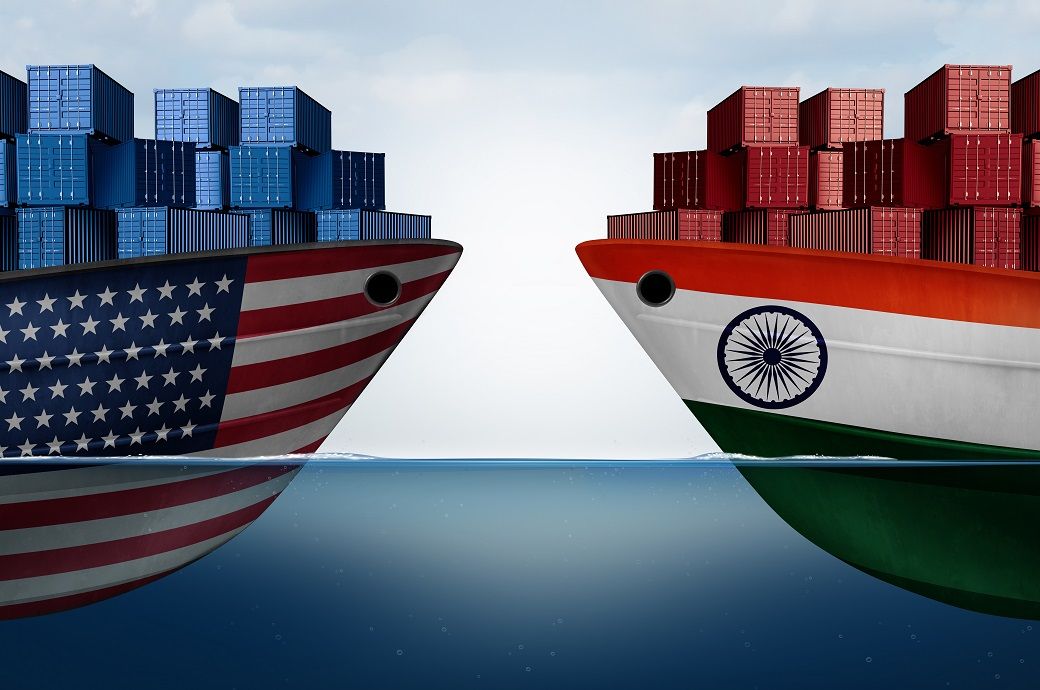
“India basically is working along that same line,” Trump maintained speaking to the reporters in Washington on Tuesday, hinting at the possibility that India could be offered similar trade terms as Indonesia.
As per Donald Trump, Indonesia will face a 19 per cent tariff on imports into the US as part of new deal with Jakarta, but no tariff on exports from the US to Indonesia.
And as news of this announcement spreads through industry circles it brings into focus what such a deal could mean for India’s major export sectors, especially the apparel industry, which counts the United States as its crucial garment export destination.
“President Trump hinting at a potential India–US trade deal modelled on the recent Indonesia agreement (where exports face a 19 per cent tariff), Indian exporters may finally find a more level playing field in the lucrative US apparel market,” underlined Kishan Daga, founder anchor of consulting service provider Concepts N Strategies, speaking to Fibre2Fashion, who also added that a tariff reduction to under 20 per cent could open “more doors” for Indian exporters, particularly in athleisure and MMF-heavy segments where India is ramping up production.
Such a shift would also support India’s vision to become a reliable global supplier in technical textiles and functional apparel, claimed Daga even as Sabhari Girish, chief sustainability officer at Sulochana Cotton Spinning Mills (Tiruppur) on his part stated: “It is undoubtedly a very positive development if we have to pay 19 per cent tariff as is the case with Indonesia; and it also implies how hard we negotiated on tariffs to maintain our competitiveness.”
Girish also noted that assuming India also have to pay 19 per cent tariff, the real challenge for the industry would be in seizing the opportunity even as he urged exporters to expand their production capacities and boost manpower in order to make the most of this situation.
Meanwhile, N Thirukkumaran, chairman of Tiruppur based Ess Tee Exports India Pvt Ltd, said, “India will definitely have a competitive advantage compared to many of its rivals. However, this will come with a caveat—the new tariff would be in addition to the existing duties Indian apparel exporters already pay on shipments to the US, which could somewhat diminish the overall benefit, even if the new tariff rate is set at 19 per cent.”
He, however, remained cautiously optimistic, noting that India might negotiate hard to bring the tariff down from 19 per cent in the interim deal—a move that, if successful, could be a game-changer for the industry.
It may be mentioned here that with discussions focusing on expanding market access and negotiating tariff reductions on goods estimated to constitute between $150 billion and $200 billion in bilateral trade, it is clear that both nations see the potential to unlock even greater economic value, a sentiment that is echoed in several recent media reports suggesting that India and the US aim to boost bilateral trade volumes to $500 billion by 2030, a figure that would mark a substantial leap and a transformative moment in their strategic and economic partnership.
But this optimistic projection hinges on the successful completion of an equitable and mutually beneficial trade agreement.
Even as the discussions with the US continue, aiming to finalise a comprehensive trade deal, all eyes are now on the so called ‘mini trade deal’, which is on the verge of being formalised, and is seen as a precursor or stepping stone to a more robust and all-encompassing arrangement.
The origins of this mini trade deal date back to when Trump first announced his intention to impose additional tariffs on a number of countries with which the US has a trade deficit, a list that prominently included India due to its substantial export surplus vis-à-vis the US, with India exporting roughly $77 billion worth of goods to the United States annually while importing only around $42 billion, thus maintaining a trade surplus that has long been a point of contention for the Trump administration, which has repeatedly demanded more equitable terms of trade and better access for US goods and services in the Indian market.
If one may recall, in February, Prime Minister Narendra Modi and President Trump had announced during Modi’s two-day visit to the United States that the ‘first tranche’ of a larger bilateral trade agreement would be announced by fall 2025, raising hopes in both capitals that years of stalled talks, misunderstandings, and tariff disputes would finally begin to yield concrete results.
However, the impetus for a more accelerated approach to the deal grew stronger after the US administration decided to impose or consider tariffs on nearly every major trading partner around the world in a bid to shrink America’s longstanding trade deficit, a goal Trump has pursued with singular focus since his election as the US President.
New Delhi has in the past demurred from signing any agreement that could have potentially adverse implications for its sensitive agricultural and dairy sectors, both of which are politically sensitive and socially vital for India.
That said, as we now wait for formal signing and announcement of the deal, which would define the tariff India will pay on its exports to the US, the sentiment within the Indian apparel industry remains notably upbeat, in anticipation of 19 per cent tariff, which is expected give an edge to Indian apparel exporters to the crucial US market.
ALCHEMPro News Desk (DR)
Receive daily prices and market insights straight to your inbox. Subscribe to AlchemPro Weekly!